Table of Contents
First, What Are Jerk Blocks?
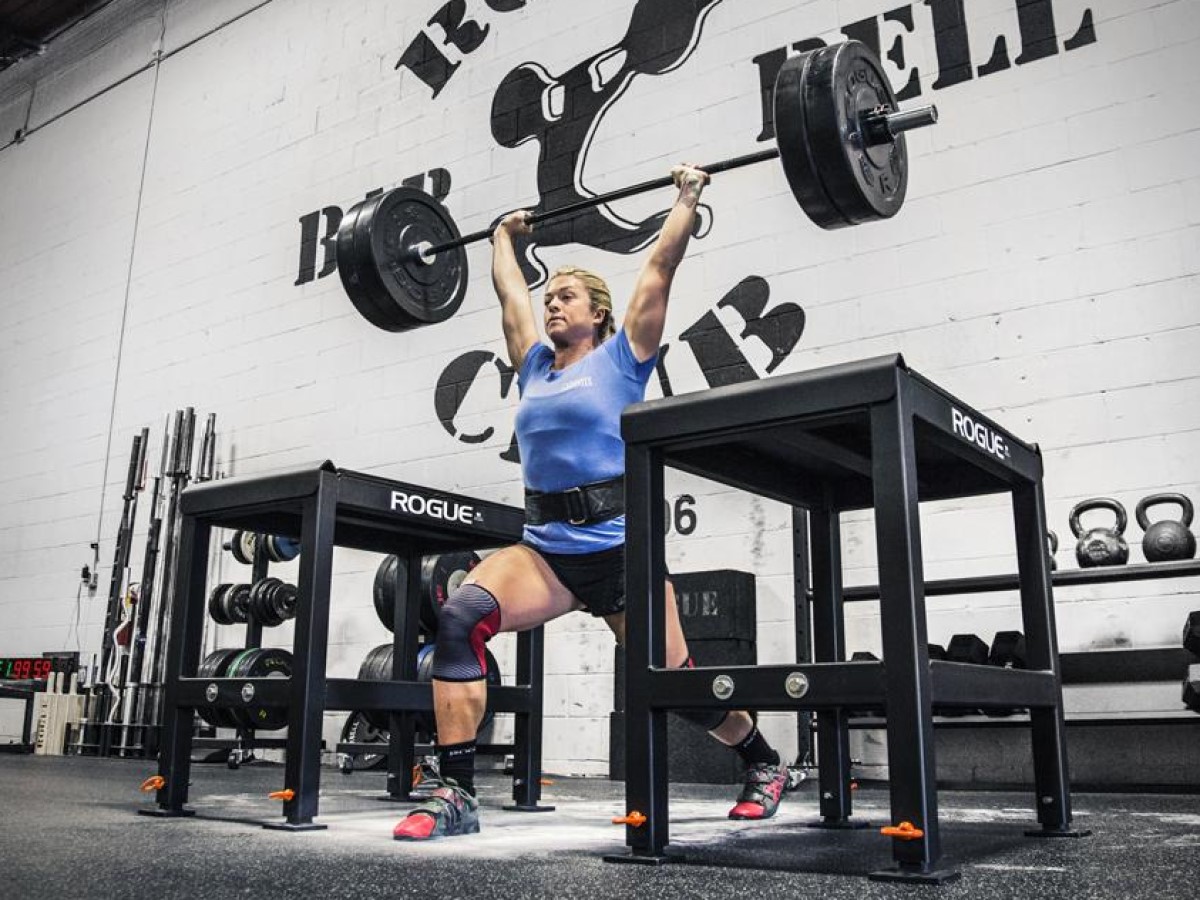
Jerk blocks, also called jerk boxes or weightlifting blocks, are a pair of platforms supporting the plates of a barbell a few feet off the ground. They put you in position to practice the jerk portion of a clean-and-jerk repeatedly, dropping the barbell back onto the platform.
They have been used for decades in olympic weightlifting as a specialty item, meant for competitive lifters to isolate and improve their jerk. They are not common in home gyms, and they aren’t even found in most Crossfit affiliates or other commercial gyms. Bumper plates are the only type of plates used on jerk blocks, due to the required impact absorption to prevent damage.
Aside from jerks, due to the height of jerk blocks there isn’t much more you can do with them besides overhead barbell movements such as push presses and strict military presses. BarBend has an article on how behind-the-neck jerks using blocks can help with strongman sticking points. When you have the option to set the blocks much lower, they become pulling blocks, which are more versatile for extra exercises and which I’ll be going over later in this article.
Jerk Block Dimensions
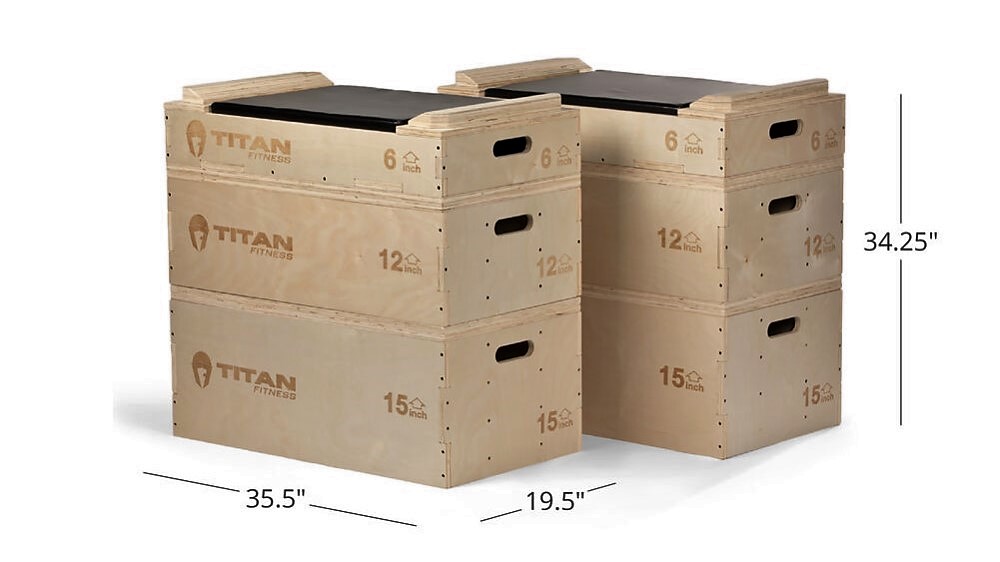
The top surface of jerk blocks varies a little between brands. A 30-40″ length is good to give you extra room front to back when dropping. A 20-24″ width is good to fit a few bumper plates with room to drop them a little off-center as well. Big wide blocks give you tons of room, and on the downside they get pretty heavy to move.
All jerk blocks have lips on the front and back top edges to stop the barbell from rolling off.
As far as the height, around 35″ is a typical height that accommodates the large majority of lifters well enough. A 6ft tall lifter might go up to about 40″ high if that’s possible with the available setup. A 5ft tall lifter might need less than 35″. The key is you want a little vertical room so you can avoid hitting the blocks on the dip portion of the jerk.
Benefits to Jerk Blocks vs Lifting From the Floor
Both the snatch and the clean-and-jerk, the two olympic weightlifting movements, are done off the floor.
The problem with having to always start these movements off the floor is when your weak point is the jerk. Unless you have done a lot of upper body training, your sticking point will be the jerk, ie: you can clean a lot more than you can jerk. In this situation you have to tire yourself out cleaning the bar into position every time you practice a jerk.
Jerk blocks specifically address this training problem by providing you with a way to dump the jerk safely and be back in position to squat the bar up only a minimal amount to be back in position to do another jerk.
Plus, it’s often beneficial to focus on one part of a movement to train it repeatedly without gassing yourself out by doing the whole movement every time. Jerk blocks keep you in position to do many reps with minimal set-up energy required.
Benefits to Jerk Blocks vs a Squat Rack
Jerk blocks serve a different function than a squat rack or power rack. Let’s look at a couple exercises.
Doing Squats
Squats are easier to do in a squat rack, where you start and end the movement off the J-hooks. The low safety bars are available to catch the bar only if you fail a rep, preventing it from squashing you at the bottom.
With jerk blocks, you could potentially do some light squats. Much like in a power rack, you would walk the weight a few feet backwards after lifting it off the jerk blocks so that you have room to squat down. In this case you would have to walk back a little further than in a power rack, to completely clear the plates from the jerk blocks. If you also have a set of pulling blocks (basically shorter jerk blocks) available, you can set them where you back up to and squat down, to act somewhat as safety spotters. But they won’t be as safe as an enclosed rack.
Granted, the blocks are very easy on your equipment the way they catch the bumper plates, in contrast to the way a steel power rack catches your bar. That’s really the only advantage to using jerk blocks for squats.
Doing Presses and Jerks
Jerk blocks are made to do presses and jerks from and take barbells dropped from overhead, all day long, without damaging anything, and have the bar ready in position for you again. They are ideal for any kind of overhead pressing movement training.
Power racks made for residential homes are typically only about 7ft high, to easily fit under an 8ft ceiling. Many men will find that they slam the shaft of the bar into the top frame of the rack when they try to press inside a power rack. Not fun. People have gotten around this by setting some J-hooks on the front of the rack (instead of inside) where no overhead frame is in the way. Safety bars aren’t really for safety in overhead presses and are more to protect your floor.
Even if you have a tall power rack or lift off the front of the rack, the other issue with power racks is you are supposed to re-rack the bar onto the J hooks, which is hard after a heavy jerk that you are always supposed to dump rather than try to catch on your shoulders, for safety reasons. This means you would be dumping the bar constantly on the safety bars or J-hooks. That’s really rough on your rack and barbell. They are both only engineered for you to do that in an emergency, and not from such a high height. Safety bars could bend from a single drop, and you certainly don’t want a J-hook to fail that way and send the bar coming down towards the lower half of your body.
Squat racks, in contrast to power racks, only have two usable uprights and no upper frame, leaving you free to press as high as your ceiling allows, unlike a 7ft high power rack. However, as with power racks, the equipment is not made for such violent drops, even more so in this case because squat racks don’t have each safety bars supported by two uprights.
That being said, a squat rack does offer another advantage over a power rack, in that you can leave the safety bars off the rack, step back to do your jerks, and then dump it to the floor. But then you do have to clean the bar again into position to put it on the rack, whereas with jerk blocks you’re ready to go for more reps without having to clean it back up.
Top Models to Consider
Rogue Metal Jerk Blocks
Height Range: 34″ to 44″ in 2″ increments
Surface Size: 24″ x 31.25″
Weight: 265 lbs Per Block
Price: $1,220 / Set
Comparing them to Fringe’s discontinued model, several things stand out with Rogue’s metal jerk blocks –
- Rogue’s are USA made
- Rogue’s weigh twice as much
- Rogue’s have an extra 2″ of adjustable height range
- Rogue’s have 2.75″ less depth (front to back)
- Rogue’s have optional change plate storage posts
The weight is a big factor. If you’ve got space and they won’t be moving, get the Rogue. They’re so heavy that they are far less likely to shift around from a lot of drops the way Fringe’s will.
Rogue Wood Jerk Blocks
Height Range: 2.25″ – 48″ in 3″ increments
Platform Size: 20″ x 36″
Weight: 246 lbs per 44.25″ Stack, 269 lbs per 50.25″ Stack
Price: $973 + Shipping / 44″ Set. Other sets available.
A set of Rogue blocks has different sizes so that you can make any height you want. You can buy any size block individually and save a few bucks by buying only the ones you need, and add another pair later if you find that you or another lifter needs a height adjustment. You can’t buy other brands of wood blocks individually like this.
USA made! Rogue builds these in their large facility with all USA-made wood and glue.
Although the price of Rogue’s is very good, shipping is extra, and being as this is a bulky item that ships fully assembled, it won’t be cheap.
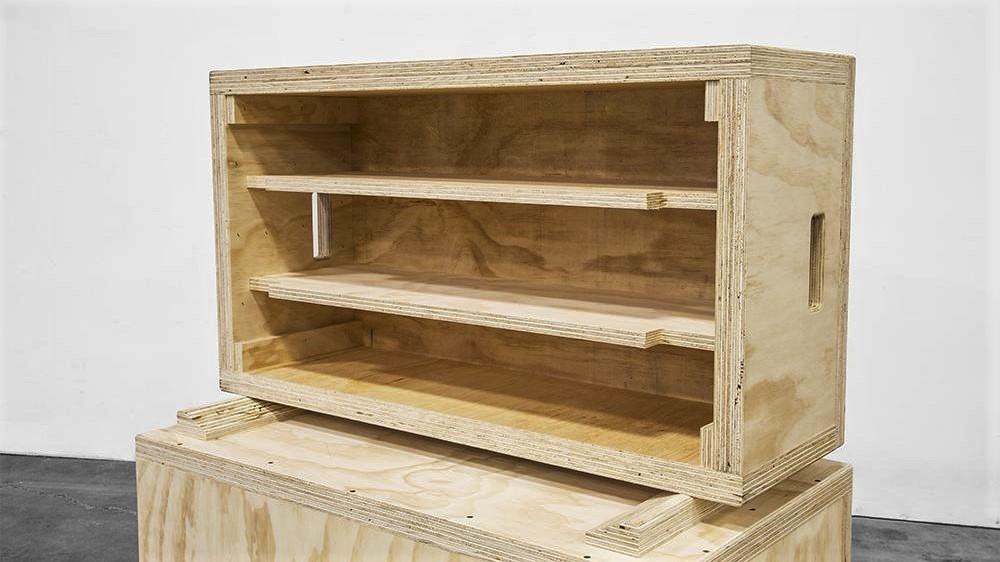
The above pic shows approximately how all brands of wood jerk boxes are constructed. They aren’t hollow like plyo boxes. The extra supports inside jerk blocks are absolutely necessary for them to take the force of dropped barbells.
FringeSport Wood Jerk Blocks
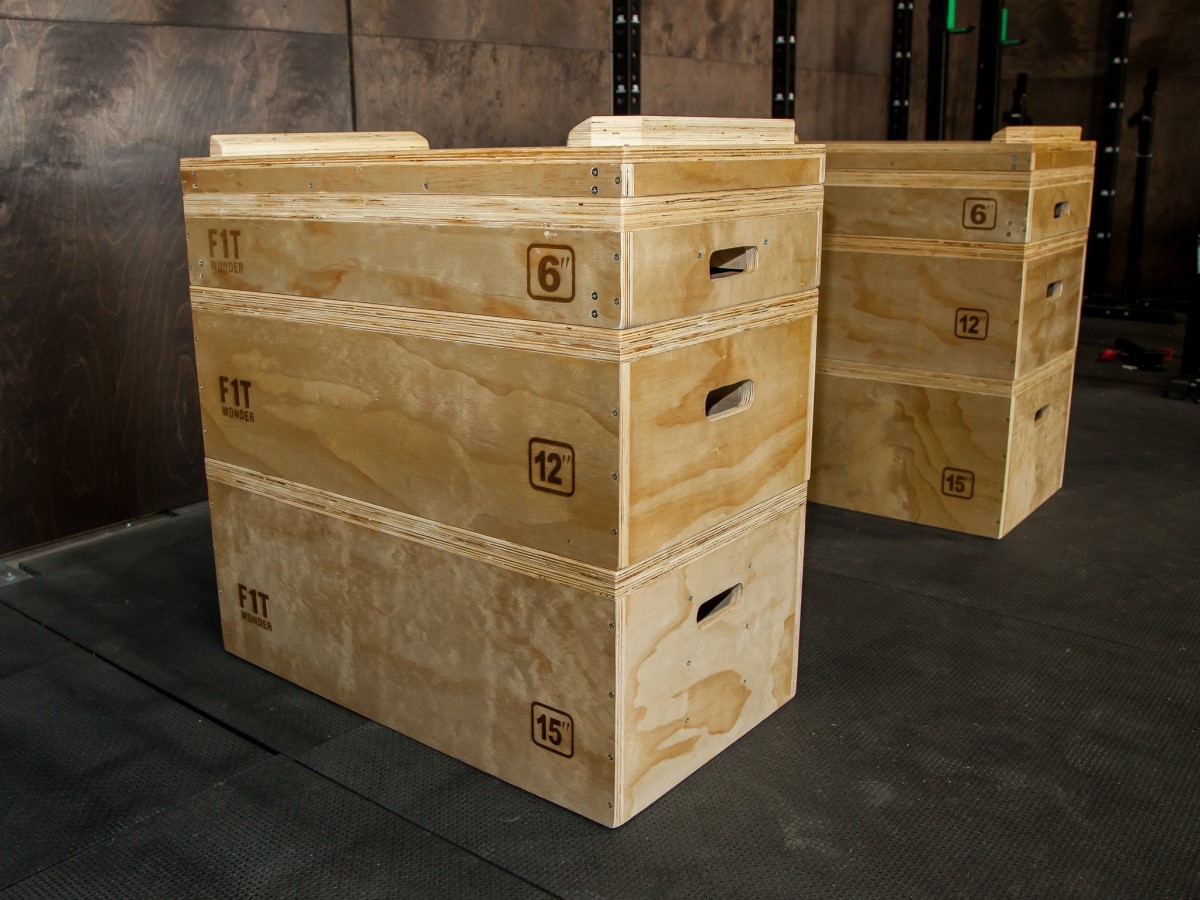
Height Range: 3″ – 48″ in 6″ increments
Platform Size: 19″ x 40.5″
Weight: 160 lbs per 36″ Stack, 200 lbs per 48″ Stack
Price: $1,168 (36″ Set) & Free Shipping
Fringe only makes a single special top block with the lips on the front and back to stop bumpers from rolling. This is the block that you’re supposed to use as the top every time and adds 3″. Because you have to use it, you have to rule that out as an optional piece for an adjustable height, making these blocks adjustable only in 6″ increments.
Another big difference with Fringe: These are very lightweight compared to the others. That doesn’t mean they will break. Fringe tests their stuff better than that. The issue with the weight is they may shift around on the floor from repeated drops.
On the upside, even the largest box is only about 30 lbs, making them easy for anyone to move.
Titan Wood Jerk Blocks
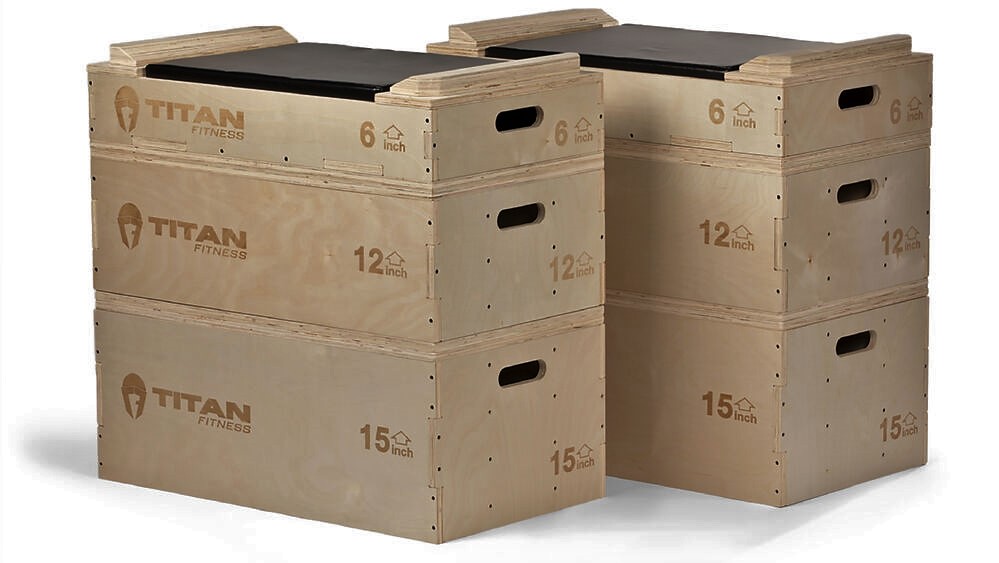
Height Range: 6″ – 34″ in 6″ increments
Platform Size: 19.5″ x 35.5″
Weight: 303 lbs per 34″ Stack
Price: $1000 & Free Shipping for $34″ Stack
These weigh about the same as the Rogue Wood Jerk Blocks in relation to height, meaning the construction and materials should be commensurate. Nothing about the Titan being USA-made, though. Rogue still has that going for them. Anyway, Titan is often known for making low-cost Rogue imitations. In this case it looks great.
They also added a PVC-covered foam silencer pad, which nobody else here has.
Taller users might find this set to be shorter than optimal. If you know your height, great. If you don’t, you might save yourself a headache by going with another option where you can add blocks later.
High Density Plastic Blocks: DC Blocks Double-Wide
Height Range: 2″ Increments, any Height
Weight: 378 lbs per 36″ Stack
Surface Size: 19″ x 32″
Price: $1,908 for 36″ Set
DC Blocks are interlocking blocks that can take any kind of weight you want to drop on them.
The flec-on-black design makes them look recycled rubber mats in the pic, but they’re actually a recycled plastic blend that won’t wear out, won’t crack, and is UV resistant.
Their Original model is 19″ x 15.5″, and the Double Wide is 19″ x 32″. The videos above show the Original. I’m mainly just presenting the Double Wide here, because frankly the Original is too narrow.
DC Concepts Inc. gives a lifetime warranty, which you’ll qualify for if you buy through any authorized dealer like Rogue or direct from DC Concepts.
They’re made from a blend of recycled plastic – HDPE, LDPE and XPE – that makes them resistant to cracking or denting. It makes me think of UHMW plastic, which is used on the bar holders and safeties of modern power racks and can take a loaded bar being dropped on it without cracking.
Each 2″ tall block weighs 21 lbs each. So if you stack these to 36″ high, each stack is 378 lbs, about the same as wood jerk blocks. This isn’t lightweight plastic.
Each block has a lip on the front and back as part of the mold, enough to keep bumpers from rolling off. They do have a flat top piece you can buy separately if you want to double it as a plyo box.
I have to think that molded plastic like this has to be relatively cheap and easy to mass produce, but so far they’re the only plastic jerk blocks I can find.
Again, as I mentioned a few paragraphs up, I recommend the Double Wide over the Original. On the Original the 15.5″ x 19″ platform area is kind of small. That 19″ doesn’t leave you a lot of room before your bumpers start hitting the safety lips, which is fine for the smaller range of motion of block pulls but not so much for block cleans or block jerks. For sloppy lifters that’s a big deal. Anything that curbs potential mayhem is a big point in my book. The Double Wide eliminates this risk as much as any large set of jerk blocks does.
The problem is the Double Wide are expensive, not even in the same ballpark price as the other styles of jerk blocks. These make more sense price-wise as pulling blocks, which I go over at the end of this article, especially if the Original will work for you.
Soft Impact Foam Jerk Blocks
People have used soft foam plyo boxes as soft impact jerk blocks successfully.
Here’s an example:
Rogue has plyo boxes that will work as foam jerk blocks. As they are made for doing plyo jumps, the foam is fairly sturdy but with just a little bit of give to it, or at least that’s the case when you jump up onto it.
Something falling a few feet onto foam blocks like that is a different matter. Rogue does not advertise them for this application. I’m going to guess they’re expecting premature wear if you use them as jerk blocks. Foam I think is made differently when it’s meant to be used as a crash pad.
People have suggested using a foam plyo box on top of a wood or steel jerk block to cut down the noise. I don’t know of any that are made the right size for that. Your best bet there would be some kind of DIY project using foam, vinyl, and some way to secure it.
Choosing a Style
Strength and Durability
They’re all made to be plenty strong.
Some poorly constructed wood jerk blocks can eventually wear out and break. Plywood can warp over time from moisture. Don’t leave wood blocks outdoors.
You have to rank steel up near the top for durability long-term. The rubber surface isn’t going to wear out any quicker than rubber flooring. The steel frame of course will stay good indefinitely. There’s no way any well-made steel jerk boxes will bend from heavy drops.
The Double Wide DC Blocks are the heaviest of all. The high-molecular-weight plastic of DC Blocks doesn’t have any notable long-term wear issues. It’s UV resistant. You could conceivably leave DC Blocks unprotected outside exposed to the lements for months by a termite-infested shed and not worry about them, unlike wood or steel blocks. I wouldn’t, when they cost this much. On the environmental-friendliness side, plastic takes eons to degrade, but hey, at least it’s recycled plastic.
Foam jerk blocks do wonders to protect the barbell and plates from any impact. But those high impact drops are rough on the vinyl covering and foam.
Portability
DC Blocks are pretty good here. The small 20 lb blocks of the Double Wide are super portable, even if the total weight of all the blocks of a given height is heavier.
Reinforced wood blocks are not exactly light, but most people should be able to deal with it, and they have built-in handles. Smaller, weaker athletes will have trouble moving the larger boxes of some brands.
Steel jerk blocks weigh a lot, even Fringe’s lighter ones at 130 lbs each. Could be problematic. You need two people to carry each. Seriously, don’t get these if you plan on moving them around frequently. I’m sure you’re a badass and you can carry 130 lbs, but these are awkward, shin-banging nuisances that don’t like to be moved.
Foam jerk blocks are pretty light. I think they win here!
Adjustability
DC blocks win here again. They’re stupid easy to stack for anyone.
Wood blocks are pretty easy to adjust. You may need to rearrange all the boxes to get the right height.
You have to tip over a steel box onto its side to have any hope of adjusting it, and then pull the pins and adjust each foot one at a time. The height is even harder to judge than wood blocks. You’re best off remembering what hole you adjusted the pins to. Tipping them over to adjust them is doable but not trivial for a smaller athlete.
Foam jerk blocks are pretty easy too, with some sort of velcro strips, the design of which varies between brands.
Height Range
DC Blocks win again. Stack them up as high as you want. They’re heaviest and have the lowest risk of tipping over.
Wood blocks are nearly as good. Some models you can adjust in 3″ increments. You might be limited on the top end by the pre-configured set size that each store sells.
With a starting height of nearly 3ft, steel jerk blocks can’t be used as pulling blocks (for deadlift-style block pulls or cleans). For a 6ft athlete, that puts the bar above your belly button at a minimum. From there it only goes a maximum of 8″ higher. They have figured out that this range works for virtually everyone practicing jerks, but if you’re into doing pulls (ie: lower starting height), you will want something else.
Foam jerk blocks are similar to wood in their adjustability.
Plyo Box Usage
Steel jerk blocks look so much like plyo boxes that you can’t help but think about jumping on them. And some are made with that in mind. You kind of want at least a 24″x24″ area to jump on, for stability. You might be fine with smaller. The issue is any steel jerk blocks have a limited height range.
Wooden jerk blocks generally work great for box jumps.
DC Blocks in the Double Wide version are usable for box jumps. The 2″ increments makes them even nicer. Large surface, very stable. I would like to see slightly rounded edges to mitigate bloody shins from missed jumps. They should be able to do that. But it seems like they don’t really market them as plyo boxes.
Foam plyo blocks… Well, there’s not much argument here. These things literally are already perhaps the best plyo boxes you can get. This is the main reason people started giving them a shot for doing jerks.
The Winners
Given all that, in my opinion, wood jerk blocks are the best choice for most people, whether you’re lifting by yourself in your garage gym or you have multiple people using it in any environment.
The Titan Wood Jerk Blocks are worth a serious look first if you know the 34″ height is going to work out fine. If you’re not sure, shell out some extra money for the USA-made Rogue Wood Jerk Blocks and their granular height range adjustments.
The Short Cousin: Pulling Blocks
Pulling blocks are shorter than jerk blocks. Pulling blocks are made to give you a higher starting height for the pull, whether for block cleans or block deadlifts (usually called block pulls). Block pulls are essentially the same as rack pulls, and easier on your bar than in a power rack. The reason people do either block pulls or rack pulls is to isolate a part of the lift for training it better or to avoid pain associated with squatting too low in a regular pull off the floor.
Almost any wooden jerk blocks discussed above, or the DC Blocks, function also as pulling blocks, if you can get the right height. The terminology is just a difference in height. On the other hand, steel pulling blocks are not engineered to adjust to the height needed for jerks.
I’m just giving pulling blocks this brief mention to put everything in context. Pulling blocks are not as popular as jerk blocks, so I’ve focused mainly on jerk blocks in this article. If you’d like me to write something similar for pulling blocks, leave me a comment!

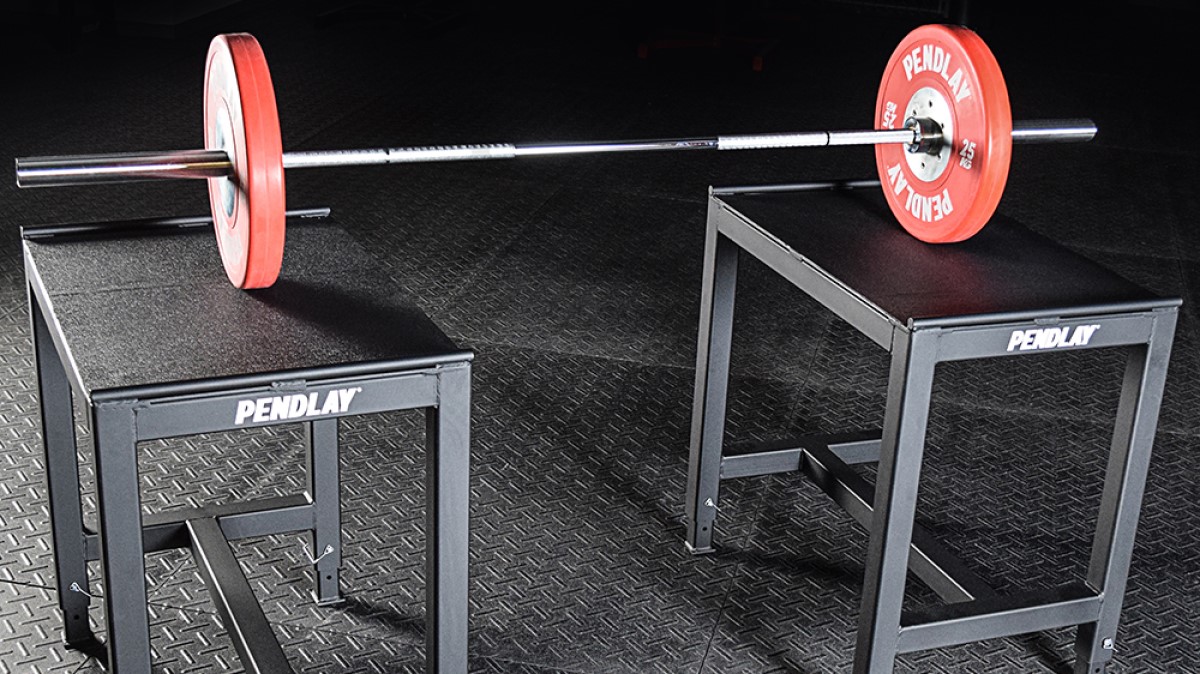
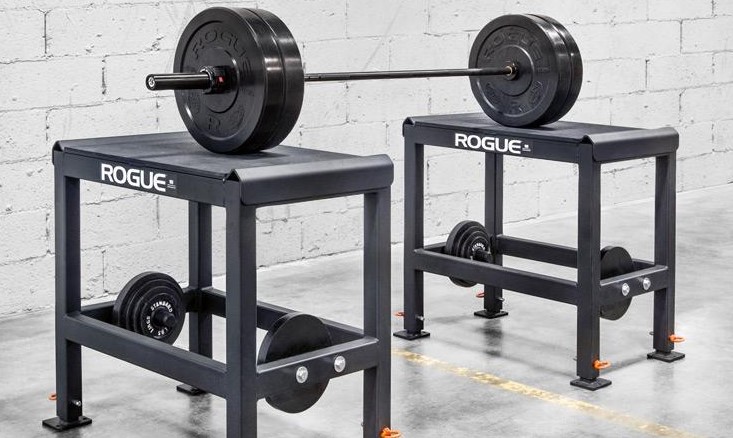
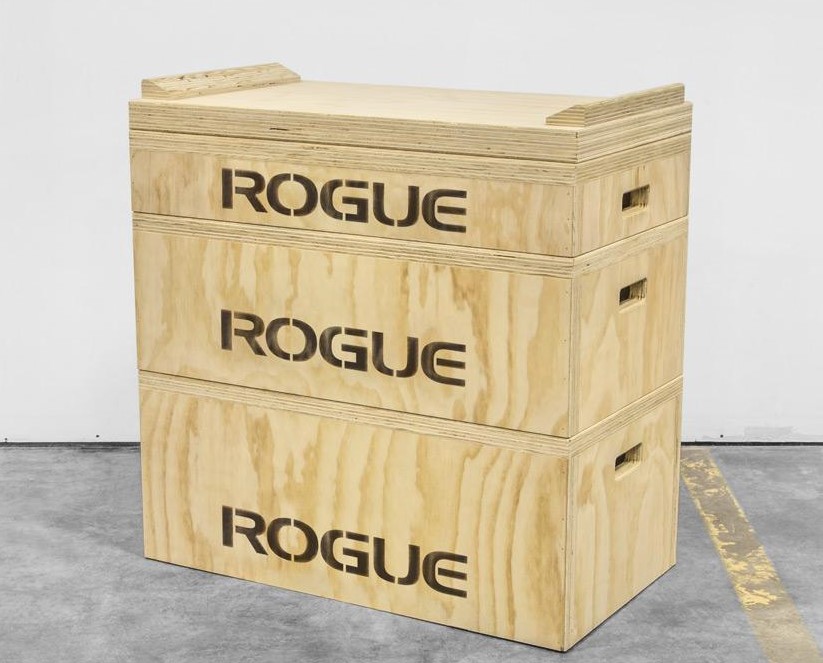
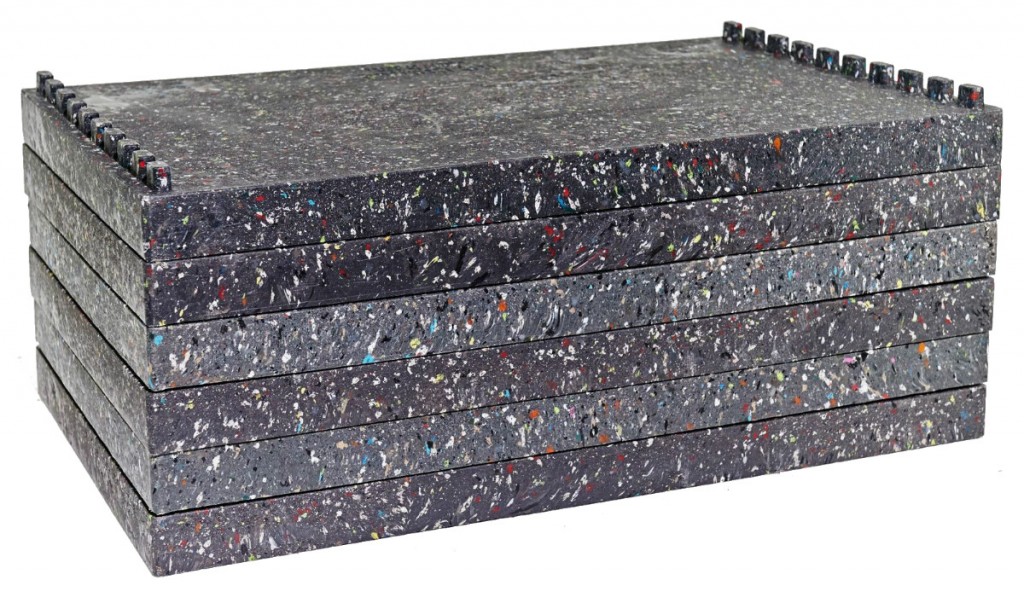
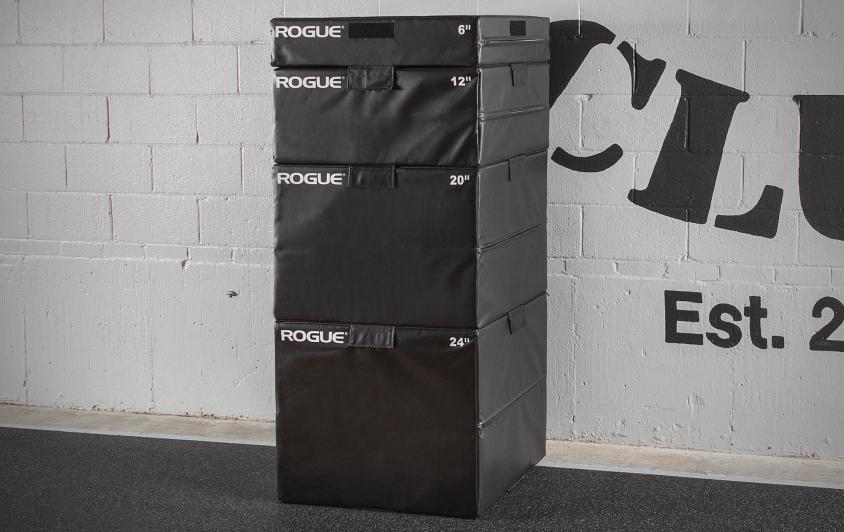
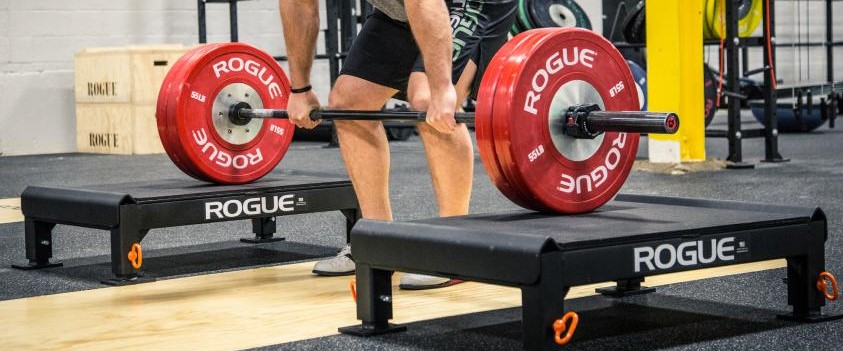
Hey Dave:
Thanks for the nice review! I do not disagree with anything you wrote, but I can offer a couple of explanations as to why I have produced the size and shape of the DC Blocks that I do.
Admittedly, the Original (19″ x 15.5″ x 2″, 10.5lbs) is small for jerk blocks, but work great for pulling blocks. This size was meant to be very portable, durable, and versatile in function, as nothing like this existed 10 years ago when I invented them.
The robust character from a special blend of recycled HDPE, LDPE, XPE allow for rigidity and flexibility so that they do not fracture or dent.
Since these are compression molded vs injection molded, the production cost are not as cheap as one might think. Personally, I priced these at a fair price and back in 2010 cheaper than my competition for pulling blocks and their prices actually came down, or became “on sale.”
The big expense is the aluminum mold. Once I could afford one, I made a second product: the Double-Wide with dimensions of 31″ x 19″ x 2″, 23lbs). They fit on top of two Originals placed side-by-side. I still wanted to make them lightweight and versatile. The reason I came up with the Double-Wide was to offer a portable jerk box. Standard jerk boxes need dedicated space, and space of often a premium. Also, larger professional athletes prefer a larger size.
With the use of XPE (cross-linked polyethylene) I have been able to recycle and use this type of plastic which cannot be melted or made into something else. So far, I have keep 1,000,000 lbs of plastics out of the oceans and landfills during the last 10 years.
I do not have a product with rounded corners, because it would be too expensive to make and the market for these is just not there. While DC Blocks Originals are great for plyometrics, I have always maintained that there are products more appropriate for maximal height jumps and will defer to those products if one is to see how high they can jump upon.
First Place! thanks.
Derrick Crass
Olympian 1984/1988 – weightlifting
Thanks for sharing the info on your development process. It looks like the DC Blocks are still the only plastic jerk blocks out there!